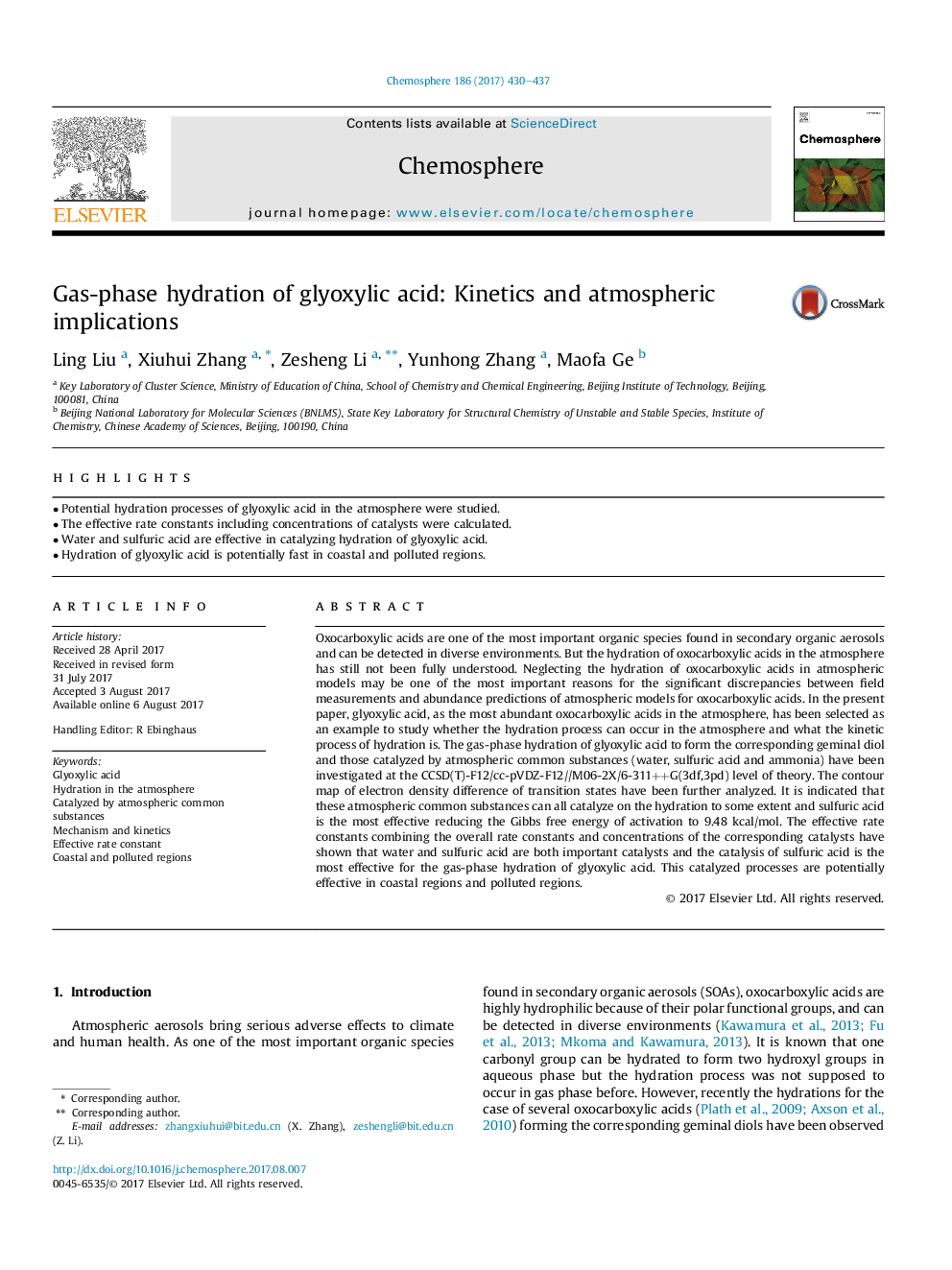| کد مقاله | کد نشریه | سال انتشار | مقاله انگلیسی | نسخه تمام متن |
|---|---|---|---|---|
| 5746024 | 1618785 | 2017 | 8 صفحه PDF | دانلود رایگان |
- Potential hydration processes of glyoxylic acid in the atmosphere were studied.
- The effective rate constants including concentrations of catalysts were calculated.
- Water and sulfuric acid are effective in catalyzing hydration of glyoxylic acid.
- Hydration of glyoxylic acid is potentially fast in coastal and polluted regions.
Oxocarboxylic acids are one of the most important organic species found in secondary organic aerosols and can be detected in diverse environments. But the hydration of oxocarboxylic acids in the atmosphere has still not been fully understood. Neglecting the hydration of oxocarboxylic acids in atmospheric models may be one of the most important reasons for the significant discrepancies between field measurements and abundance predictions of atmospheric models for oxocarboxylic acids. In the present paper, glyoxylic acid, as the most abundant oxocarboxylic acids in the atmosphere, has been selected as an example to study whether the hydration process can occur in the atmosphere and what the kinetic process of hydration is. The gas-phase hydration of glyoxylic acid to form the corresponding geminal diol and those catalyzed by atmospheric common substances (water, sulfuric acid and ammonia) have been investigated at the CCSD(T)-F12/cc-pVDZ-F12//M06-2X/6-311++G(3df,3pd) level of theory. The contour map of electron density difference of transition states have been further analyzed. It is indicated that these atmospheric common substances can all catalyze on the hydration to some extent and sulfuric acid is the most effective reducing the Gibbs free energy of activation to 9.48Â kcal/mol. The effective rate constants combining the overall rate constants and concentrations of the corresponding catalysts have shown that water and sulfuric acid are both important catalysts and the catalysis of sulfuric acid is the most effective for the gas-phase hydration of glyoxylic acid. This catalyzed processes are potentially effective in coastal regions and polluted regions.
Journal: Chemosphere - Volume 186, November 2017, Pages 430-437
